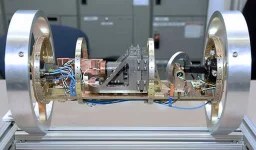- Views: 1K
- Replies: 2

India's Ministry of Defence (MoD) is spearheading a technological evolution in its aerial combat capabilities with the iDEX ADITI Edition 1.0 challenge.
This bold initiative targets Indian startups, urging them to develop a cutting-edge, helicopter-launched drone system infused with Man-Unmanned Teaming (MUM-T) capabilities for the Indian Air Force (IAF).
Strategic Imperative: Upgrading the Mi-17 Fleet
At the heart of this challenge lies the goal of transforming the IAF's formidable fleet of Mi-17 helicopters into potent drone carriers. These versatile helicopters have long served as a backbone of India's air power, but the iDEX ADITI initiative aims to push their capabilities even further.By enabling them to launch and control armed drones, India seeks to extend the Mi-17's operational reach and strike power, significantly enhancing its tactical flexibility.
The Vision: Armed, Autonomous, and Precise
The envisioned weaponized drones must deliver substantial firepower, with the capability to carry a minimum 50-kilogram warhead and accurately engage targets beyond 40 kilometers.To ensure pinpoint precision in complex combat scenarios, the system must possess a Circular Error Probable (CEP) of less than 5 meters, ideally under 3 meters.
Technical Complexities: Navigation, Control, and Communication
The challenge outlines a sophisticated drone system that addresses the realities of modern battlefields. Equipped with an Electro-Optical/Infrared (EO/IR) head, the drones must be able locate targets and operate effectively even when GPS signals are denied or disrupted.The importance of pilot control is highlighted with the requirement for a Pilot-in-the-Loop (PIL) capability. This ensures that pilots can retain control, guide the drones precisely, and receive real-time video feeds for superior situational awareness on the battlefield.
Perhaps the most ambitious aspect of the challenge is the call for communication systems that allow a single control station to simultaneously manage multiple drones launched from a helicopter. This would introduce a new level of tactical coordination in aerial warfare.
Practicality and Resilience
The iDEX ADITI challenge underscores the need for a system that balances technological sophistication with battlefield practicality.Drones need to seamlessly integrate with the existing bomb racks of Mi-17 helicopters while being easy to maintain, handle, and store under challenging conditions.
Environmental sealing is paramount, assuring operational readiness across diverse weather patterns.
Empowering India's Defence Ecosystem
Beyond its immediate military goals, the iDEX ADITI Edition 1.0 challenge is a powerful catalyst for India's aerospace and defence industries. By inviting Indian startups to tackle this complex project, the MoD is fostering innovation and technological self-reliance.Success in this endeavor will not only enhance the IAF's capabilities but also position India as a leader in the development of advanced drone warfare systems.
Conclusion
India's iDEX ADITI challenge heralds a new era in aerial combat. The development of helicopter-launched, MUM-T capable drones promises to reshape battlefield dynamics, providing India's armed forces with a decisive edge.Moreover, this initiative stands as a testament to India's commitment to nurturing its domestic defence industry, paving the way for future breakthroughs in military technology.

